Variants of weaving pots from newspaper tubes
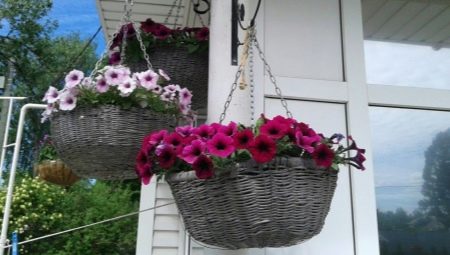
Hand-made decor items decorate the room, making it cozy and homely. One of these interior elements is a pots without a bottom, woven from newspaper tubes.
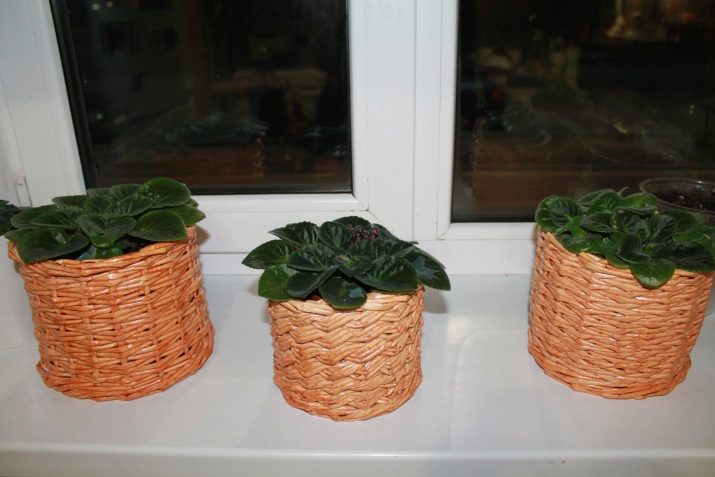
Master class on weaving pots without a bottom
The technique of weaving from newspaper tubes has existed for a long time, because it is so similar to the traditional weaving of baskets and boxes from a vine, differing only in more affordable material. Planters and baskets in either case can trudge with the presence or absence of a bottom. The newspaper bottom should not be exposed to excessive moisture, and the plant needs to breathe. Breathing and watering the flower is provided by any pot that has holes in the bottom and a saucer for water. Thus, the planter is designed not only to decorate the plant's habitat, but also not to interfere with its growth, which means that a decor without a bottom is the best option.
Required tools:
- newspapers;
- knitting needle or wooden skewer;
- PVA glue;
- cardboard;
- needle and thread;
- flower pot - the future owner of the pots;
- acrylic varnish, paints, stain - to choose from.

It is very easy to carry out the work step by step, because all actions are repeated in it, however, it is important to follow the algorithm.
- Cutting newspaper sheets on strips 7-10 cm wide, on average 70-80 tubes are required to decorate one pot, and therefore a lot of strips will be required.
- We take a knitting needle or a wooden skewer and apply it to the corner of the strip, after which we begin to twist the tube. It is important that the tube is uniform and dense. We fix the end of the twisted tube with PVA glue and carefully remove the knitting needle from the resulting structure.
- The tube should be tighthowever, one edge will be slightly wider than the opposite, since to extend the "newspaper vine" the end of the new tube will be stuck into the previous one.
- After the preparatory work is completed, you can start drawing a circle... To do this, you can circle the bottom of the pot.
- Draw a circle on cardboard and divide into equal sectors using a compass or ruler. Our future pots will be made using the herringbone technique, so the number of sectors in a circle should be odd (27 equal parts).
- On the sector dividing line applying a newspaper vine... Since it is thin and tight, we lay out two tubes on each line. Note that the tubes do not intersect at the base, so they should be placed a little further from the center of the circle.
- A needle and thread will help to fix the structure.... We wrap the tubes with a thread in two or three places, without flattening or piercing them.
- When each of the tubes is fixed, put the pot in the center and bend newspaper sticks up, not forgetting to secure their ends along the edge of the pot with clothespins.
- We will begin to braid the pot in the "rope" technique (wave). This method will provide increased strength to our creation.
- To start weaving with string, it is necessary to take four tubes, two of which will pass in front of the base tubes, and two behind it, after which an overlap is made. The ends of the tubes are fixed and glued into the base.
- We continue weave 1-2 rows in a wave, gradually moving to the "herringbone".
- "Herringbone" begins with the removal of one pair of tubes from the weaving. To do this, we tuck it into the "string" of the first row.
- With the remaining pair we wrap the racks: two adjacent posts are behind her, two in front of her.
- Each subsequent row gradually is shifted by one vertical post.
- We finish the weaving with a "string".
- Remaining ends we hide it in weaving and cut it off.
- Turn the pots over and cut off the threads, remove the circle and push the ends into the weaving.
- We cover the finished structure with PVA glue.
Cover the dried pots with paints, fix with varnish.
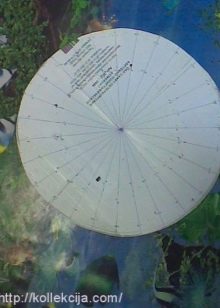
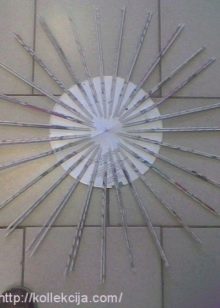
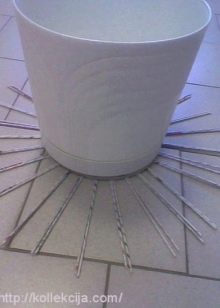
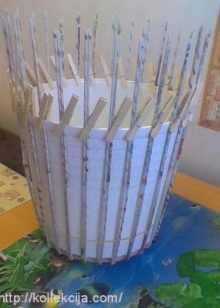
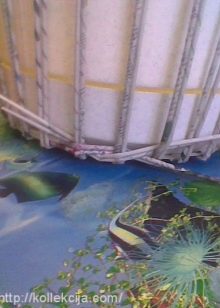
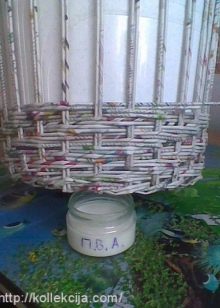
Other interesting ideas
When the skill of weaving is brought to automatism, you can try to create more complex woven products for flowers. So, you can create a bicycle planter with your own hands by creating a preliminary wire frame, which we will braid.
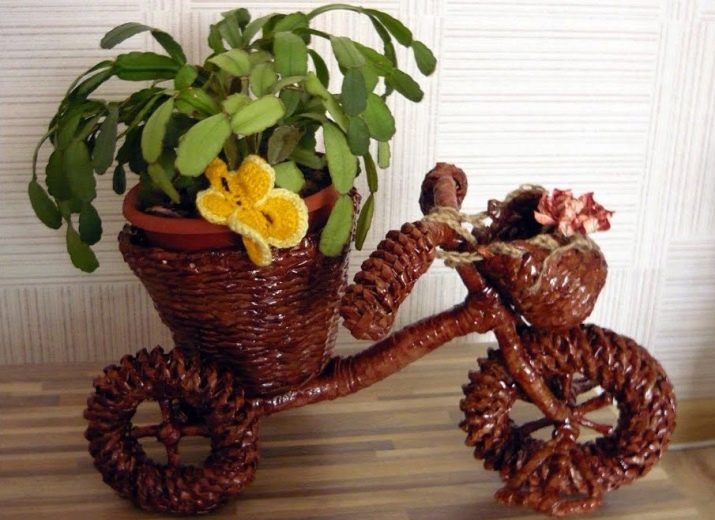
Wall pots in the form of baskets look cozy. The main feature here is the presence of one flat side.
The finished product is supplied with a wicker handle and fixed to the wall with the addition of natural or artificial flowers, as well as dried flowers.
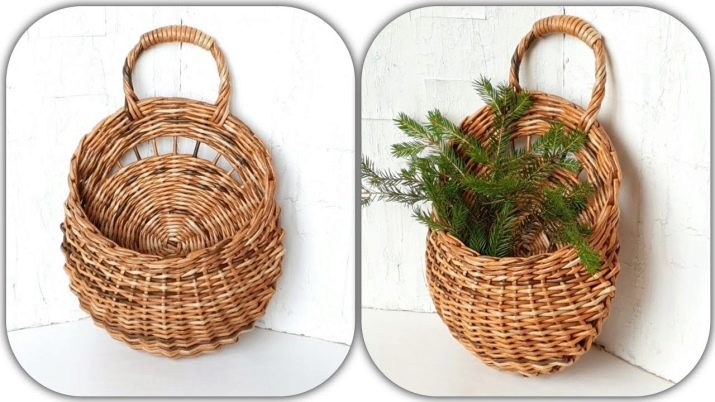
Hanging pots also look interesting in the decoration of the house. To weave them, a deep dish or bowl is selected as a base. The hanging model is fixed using chains or jute threads.

Recommendations
Despite the simplicity of the technique, any kind of weaving requires certain skills, attention and meticulousness. Masters in this area advise the following.
- Start your discoveries in this area with rope weaving.
- Use fine knitting needles.
- When working in light colors, use white writing paper instead of newspapers, avoiding print marks in the finished product.
- Dye the sticks before weaving if you plan to combine shades of newspaper vine in your work.
Tricks like these will simplify your work, help you avoid mistakes, and maintain your love of creativity.
A variant of a pots made of newspaper tubes in the video below.








